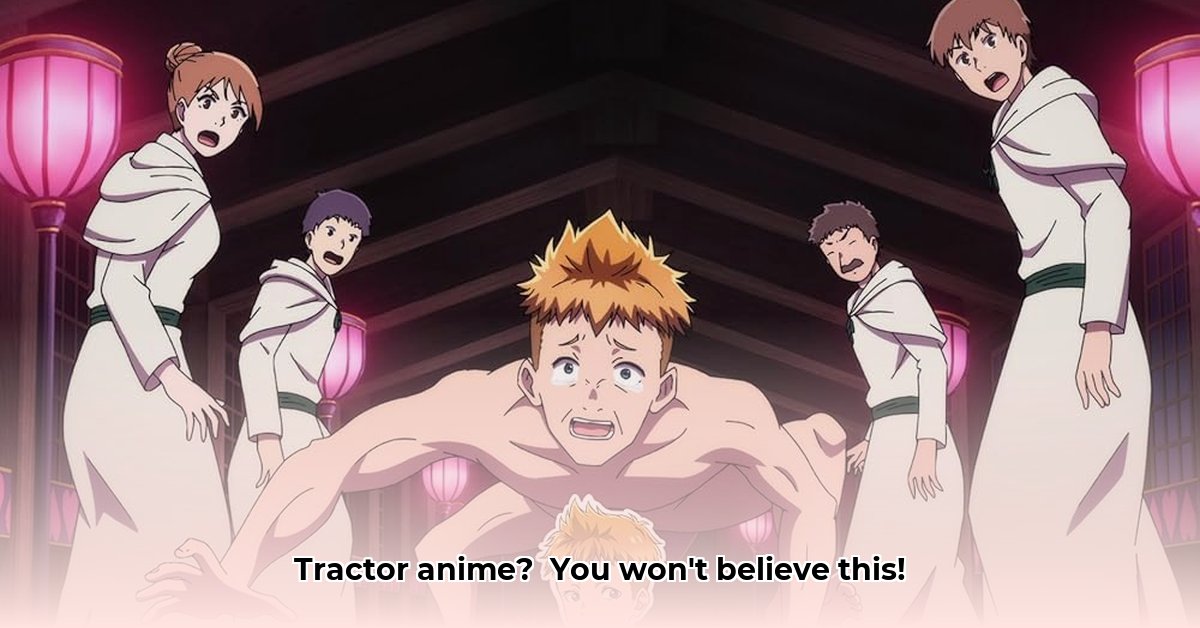
KamiKatsu Tractor: A Low-Budget Triumph That Became a Viral Sensation
The anime world, a realm often defined by meticulous artistry and high production values, experienced an unexpected phenomenon with the infamous "tractor scene" in KamiKatsu Episode 4. This wasn't a flawlessly rendered CGI spectacle; it was a jarring blend of rough computer graphics, real-life footage, and heavy filters—a visual style so unconventional it instantly ignited a firestorm of online discussion and meme creation. But was this a happy accident, a budgetary oversight, or a stroke of genius? This case study delves into the reasons behind this scene's unlikely success.
Deconstructing the Unexpected: A Deep Dive into the Scene
The scene depicts the introduction of a modern tractor into a medieval fantasy setting. The juxtaposition of the roaring machine against the backdrop of horses and oxen immediately creates a sense of incongruity, a feeling mirrored in the purposefully rough CGI. Instead of photorealism, the creators opted for a style that felt slightly off, almost dreamlike, perfectly reflecting the characters' and, by extension, the viewers' bewilderment. The sound design further amplified this effect; the jarring engine noise and clashing gears created auditory dissonance, highlighting the scene's surreal nature. It was a carefully orchestrated blend of visual and auditory chaos that, paradoxically, worked brilliantly. This wasn't about technical perfection; it was about evoking a feeling, a sense of otherworldly disruption.
The Unexpected Success of the "Bad" CGI: Why Did It Work?
The scene's success transcended mere attention; it went viral, spawning countless memes and sparking widespread online discussions. This wasn't orchestrated marketing; it was organic, grassroots virality fueled by the sheer peculiarity of the scene. This highlights a crucial point: sometimes, “bad” CGI, artfully deployed, can be far more effective than perfection. It wasn't the technical polish that mattered; it was the impact, the sheer memorability of the unusual visuals. The jarring style became a defining moment for the show. But why did it resonate so strongly? The scene's narrative function was key. The creators didn't just want to show a tractor; they wanted to emphasize the characters' reactions to this disruptive technology, creating a shared experience for both characters and viewers. This unexpected stylistic choice became a crucial part of the storytelling itself. Wasn't this a masterclass in unexpected narrative impact?
Addressing the Critics and Finding the Intent: Not a Failure, But a Choice
While some criticized the "low-budget" aesthetic, labeling the scene technically flawed, a closer examination suggests a deliberate stylistic choice rather than a production mishap. The argument gaining traction is that the jarring visuals were intentional, employed to emphasize the surreal nature of introducing modern technology into a medieval setting. The rough style forced viewers to pay attention, breaking the typical anime visual flow and thus creating a uniquely memorable—and meme-worthy—moment. Was the criticism misplaced, then, a misunderstanding of the creators' artistic intent?
Lessons Learned: Beyond the Budget, It's About Storytelling
The KamiKatsu tractor scene offers several valuable lessons. First, it demonstrates the power of deliberate stylistic choices, highlighting how unconventional approaches can be far more impactful than striving for flawless realism. Second, it underscores that viral success often stems from taking creative risks, embracing the unexpected. Moreover, it dispels the notion that budgetary constraints automatically equal creative limitations. Effective storytelling can transcend technical limitations, transforming perceived flaws into defining characteristics. The discussions sparked by the scene—among animators, studios, and fans—were arguably more significant than a technically perfect scene would have generated.
Actionable Insights: What We Can Learn From This Unconventional Success
The KamiKatsu tractor scene provides actionable intelligence for all stakeholders in anime production:
- Anime Studios: Embrace calculated stylistic choices; invest in R&D of blended animation techniques.
- Anime Viewers: Appreciate diverse animation styles; demand more creative experimentation.
- Streaming Platforms: Promote unique anime; refine algorithms to capture diverse styles.
- Critics & Academics: Re-evaluate animation quality criteria; analyze the long-term impact of style choices.
How to Replicate KamiKatsu’s Low-Budget Harvester Scene Animation Technique
The KamiKatsu harvester sequence's success lies in its simplicity and cleverness. It wasn't about expensive technology, but creative problem-solving. Here's a breakdown of the key elements:
- Source Material: Utilize readily available footage (stock footage, personal recordings).
- Stylization: Embrace a distinct visual style; use filters and color grading.
- Integration: Seamlessly blend live-action and animated elements using compositing software.
- Sound Design: Enhance the atmosphere with carefully chosen sound effects and music.
- Narrative Purpose: Ensure the scene serves a clear narrative purpose.
The KamiKatsu tractor scene proves that less can be more. Budget constraints can spark innovation, encouraging studios to embrace unconventional techniques and potentially save money while producing visually distinctive shows. It also highlights the power of viral marketing, demonstrating the effectiveness of generating buzz through unique content. The future of anime might be less about perfect CGI and more about perfect storytelling, regardless of style.